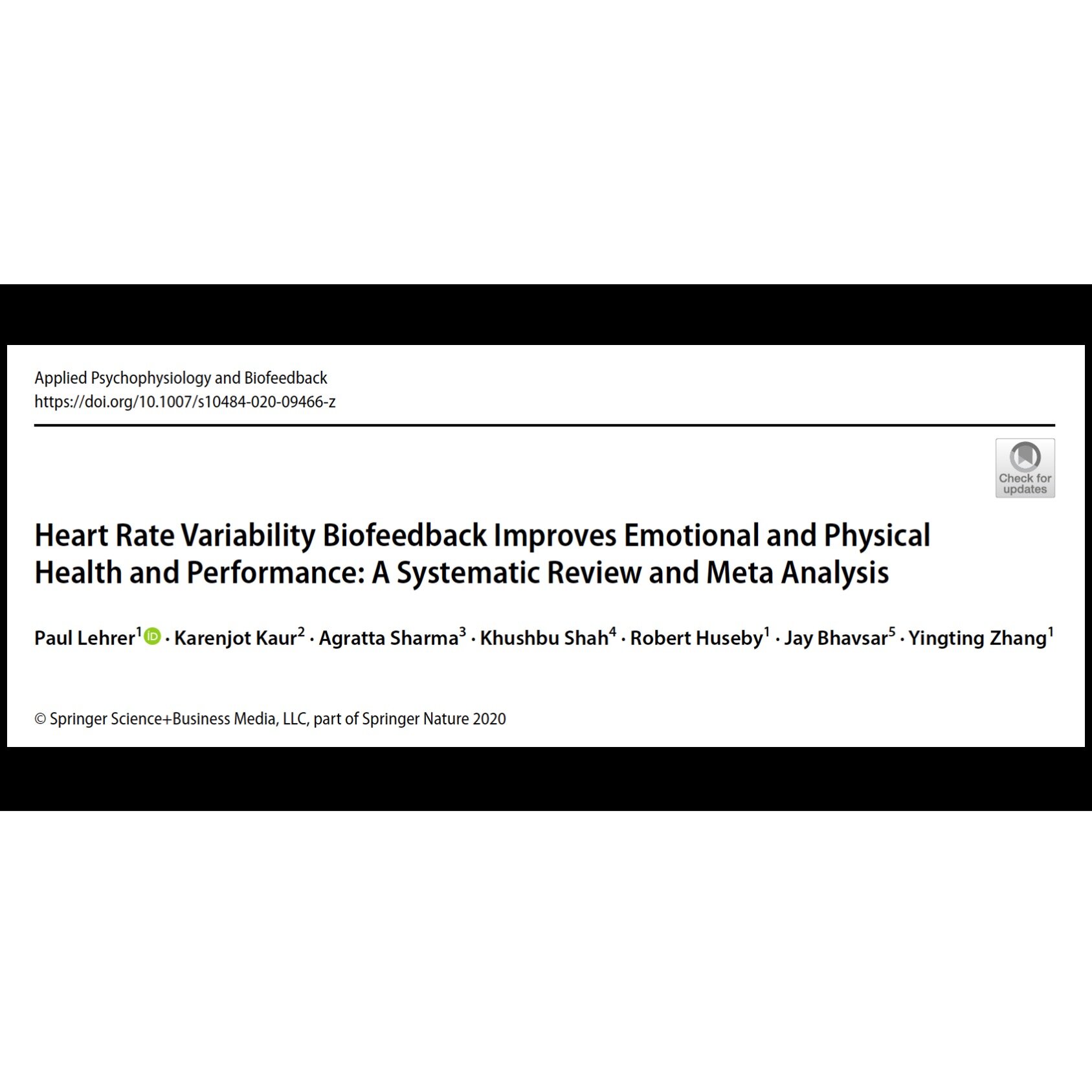Key Points
Across 58 studies and 2,485 patients, heart rate variability biofeedback (HRVB) and slow breathing improve a wide range of behavioral and physiological outcomes.
These methods provide a simple, safe, and effective complementary therapy that could be useful in a wide variety of settings.
Slow breathing (without biofeedback) is likely to be enough, requiring little more than a cellphone application to get started.
The Breathing Diabetic Summary
A hallmark of slow breathing is that it increases heart rate variability (HRV). It does this by increasing respiratory sinus arrhythmia (RSA), which synchronizes your heart rate with your breathing. When they match, your heart rate increases while you inhale and it decreases while you exhale.
Thus, RSA enhances the “peaks and troughs” of heart rate with each breath, which increases HRV. Because HRV is a robust indicator of overall health and wellness, this is one way in which slow breathing is so powerful. So much so, in fact, that HRV biofeedback (or HRVB) has become extremely popular to help with a variety of problems.
With HRVB, a person’s “perfect” breathing rate is determined—that is, one that maximizes HRV. And because increases in RSA and HRV are driven by increases in the calming parasympathetic branch of the nervous system, this can reduce negative stress and increase overall resiliency. This has wide-reaching positive benefits.
We’ve covered many of them before. But here are some of the general benefits:
Reduced blood pressure.
Reduced stress and anxiety.
Improved emotional control.
Enhanced cognitive function.
Better cardio-autonomic function.
Improved gas exchange in the lungs.
In this meta-analysis, the authors performed an extensive literature review to examine these benefits of HRVB from a broader statistical perspective. They included papers spanning a wide range of settings, measuring a wide range of outcomes.
Note that, although HRVB sounds fancy (and it can be), many of the benefits are achieved by simply breathing at a rate of about 5-6 breaths per minute.
Therefore, this meta-analysis also included studies that used 6 breaths per minute because:
“it is possible that simply doing paced breathing at about six breaths per minute would have the same salutary effects as breathing more exactly at resonance frequency. […] This can easily be taught by following a computer-generated pacing signal or a clock.”
From a practical perspective, this might be the most important aspect of this meta-analysis.
After starting with more than 1,500 papers, they ended up with 58 studies having a total of 2,485 patients.
Their statistical analysis of all these studies revealed that HRVB and slow breathing both significantly improve many aspects of health and wellness.
The greatest benefits were for:
Athletic performance
Artistic performance
Depression
Gastrointestinal problems
Anxiety and anger
Respiratory disorders
Systolic blood pressure
Pain
Smaller, but still meaningful, benefits were found for:
Self-reported stress
Quality of life
Diastolic blood pressure
PTSD
General energy
Sleep
Interestingly, I would have expected several items on the second list to be on the first. But that’s why meta-analyses like this are so important : ) Also, note that measures like “self-reported stress” are harder to quantify. The authors even mention that these results might be the result of how the questionnaires were given.
In any case, the overall results of this meta-analysis are quite exceptional: HRVB and slow breathing both have wide-ranging benefits for overall health and wellness.
These two sentences from the paper sum it up better than I ever could:
“These results suggest that HRVB might be a useful addition to the skill sets of clinicians working in a variety of settings, including mental health, behavioral medicine, sports psychology, and education. The method is easy to learn and can easily be used along with other forms of intervention, with rare side effects.”
Abstract
We performed a systematic and meta analytic review of heart rate variability biofeedback (HRVB) for various symptoms and human functioning. We analyzed all problems addressed by HRVB and all outcome measures in all studies, whether or not relevant to the studied population, among randomly controlled studies. Targets included various biological and psychological problems and issues with athletic, cognitive, and artistic performance. Our initial review yielded 1868 papers, from which 58 met inclusion criteria. A significant small to moderate effect size was found favoring HRVB, which does not differ from that of other effective treatments. With a small number of studies for each, HRVB has the largest effect sizes for anxiety, depression, anger and athletic/artistic performance and the smallest effect sizes on PTSD, sleep and quality of life. We found no significant differences for number of treatment sessions or weeks between pretest and post-test, whether the outcome measure was targeted to the population, or year of publication. Effect sizes are larger in comparison to inactive than active control conditions although significant for both. HRVB improves symptoms and functioning in many areas, both in the normal and pathological ranges. It appears useful as a complementary treatment. Further research is needed to confirm its efficacy for particular applications.
Journal Reference:
Lehrer, P., Kaur, K., Sharma, A., Shah, K., Huseby, R., Bhavsar, J., & Zhang, Y. (2020). Heart Rate Variability Biofeedback Improves Emotional and Physical Health and Performance: A Systematic Review and Meta Analysis. Applied Psychophysiology and Biofeedback, 45(3), 109–129. https://doi.org/10.1007/s10484-020-09466-z

